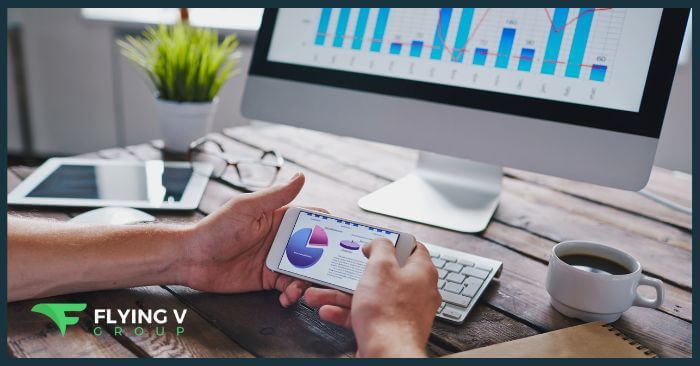Two decades of managing digital campaigns have taught me that the most successful marketing strategies aren’t built on choosing between channels, but on understanding how they amplify each other. Yet, despite this truth, I still see businesses treating SEO and PPC as separate entities, measured in isolation and optimized independently.
That approach worked when tracking was simple and customer journeys were linear. However, in 2025, with iOS tracking changes, cookie deprecation, and increasingly complex buying behaviors, the old playbook is no longer practical. The businesses winning today aren’t just running great SEO campaigns or stellar PPC efforts. They’re creating integrated systems where both channels work together to solve the attribution puzzle that’s keeping most marketers awake at night. Forward-thinking SEO agencies now recognize this integration imperative as fundamental to sustainable growth.

Source: Image by rawpixel.com on Freepik
- The Attribution Crisis That’s Reshaping Digital Marketing
- Why Traditional Channel Silos Are Costing You Conversions
- The Data Harmony Approach: Making SEO and PPC Work Together
- The Technical Infrastructure for Cross-Channel Attribution
- Real-World Integration Strategies That Drive Results
- Measurement Frameworks for the Post-Cookie Era
- Building Internal Processes for Sustainable Integration
- The Competitive Advantage of Early Integration
- Preparing for What’s Next: The Future of Integrated Search Marketing
The Attribution Crisis That’s Reshaping Digital Marketing
The numbers paint a stark picture of our current reality. Since the iOS 14.5 update from Apple, attribution tracking has become increasingly unreliable, with many platforms reporting significant underreporting of conversion values. Google’s documentation on privacy and measurement acknowledges these challenges. Google Analytics 4 shows similar gaps, with attribution windows shortened and cross-device tracking severely limited. Additionally, Google’s Enhanced Conversions documentation offers insights into how businesses can address these measurement challenges.
However, here’s what the industry data doesn’t capture: the shifts in human behavior that make attribution even more complex. Modern buyers research on mobile, compare on desktop, discuss in forums, check reviews, and often convert days or weeks after their first interaction. A recent study showed the average B2B buyer interacts with 13 pieces of content before making a purchase decision, spanning multiple devices and channels.
This complexity isn’t just an academic problem. It’s crushing marketing ROI for businesses that can’t connect the dots between touchpoints. Companies thriving in this environment have figured out how to utilize SEO and PPC as complementary data sources, filling in the gaps that each channel leaves when operating independently.
Why Traditional Channel Silos Are Costing You Conversions
Most businesses optimize SEO and PPC in isolation because that’s how agencies and internal teams are typically structured. The SEO team focuses on organic rankings, content creation, and building long-term authority. The PPC team concentrates on immediate conversions, bid optimization, and cost per acquisition.
This structural separation creates blind spots that compound over time. Your SEO efforts might be driving branded searches that your PPC campaigns are unnecessarily competing for, inflating costs. Meanwhile, your PPC campaigns may be identifying high-converting keywords that your content strategy overlooks. The result? Businesses struggle with conversion content that fails to leverage insights from both channels.
I’ve witnessed this dysfunction firsthand across hundreds of accounts. A SaaS client was spending $50,000 per month on branded PPC ads, while their SEO team had organically captured position one for those same terms. Simultaneously, their PPC data revealed that “workflow automation” variants converted 340% better than their primary “project management” focus, but their content strategy remained fixated on the lower-performing terminology.
The solution required treating both channels as components of a unified acquisition system rather than competing departments. Within six months of integration, their cost per lead decreased by 45% while total lead volume increased by 78%. Understanding how to combine SEO and PPC services effectively is essential for achieving these transformative results.
The Data Harmony Approach: Making SEO and PPC Work Together
Creating true synergy between SEO and PPC requires rethinking how you collect, analyze, and act on performance data. The goal isn’t just running both channels, but using each to enhance the effectiveness of the other.
Your PPC campaigns provide immediate conversion data that can guide SEO content creation. High-converting ad copy reveals messaging that resonates with your audience, informing meta descriptions, title tags, and content angles. Meanwhile, SEO keyword research reveals long-tail opportunities that may be too expensive for PPC but are ideal for content targeting.
PPC offers the speed to test messaging, offers, and positioning before committing SEO resources to long-term content creation. Conversely, SEO provides the testing ground for broader keyword themes that might justify PPC expansion. Instead of viewing organic and paid traffic as separate funnels, successful integration requires mapping complete customer journeys that span both channels.
The Technical Infrastructure for Cross-Channel Attribution
Building effective SEO-PPC integration requires technical foundations that most businesses overlook. Standard analytics setups simply can’t capture the nuanced interactions between channels that drive modern conversions.
Traditional UTM parameters were designed for simpler attribution models. Modern integration requires UTM strategies that track channel assists, not just last-click conversions. Google Analytics, Google Ads, Search Console, and third-party SEO tools each provide pieces of the attribution puzzle. Integration requires connecting these data sources to reveal patterns invisible within individual platforms.
With traditional conversion tracking limited, successful businesses are building statistical models that estimate actual conversion values based on observable behaviors. This involves analyzing patterns across known conversions to predict the likelihood that specific traffic patterns represent converted users, even when direct tracking fails. Advanced analytics tools that can stitch together cross-channel journeys.
Conversion Value Modeling
With traditional conversion tracking limited, successful businesses are building statistical models that estimate actual conversion values based on observable behaviors. This involves analyzing patterns across known conversions to predict the likelihood that specific traffic patterns represent converted users, even when direct tracking fails.
Real-World Integration Strategies That Drive Results
The most effective SEO-PPC integration strategies center on core principles that address both tactical and strategic elements of cross-channel optimization.
Rather than competing against yourself for branded terms, create a strategic approach that maximizes total branded real estate. Utilize PPC to capture branded searches with promotional messaging, while ensuring that organic results provide comprehensive information.
Establish systematic processes for turning successful content into PPC ads and high-performing ads into content topics. Track which blog posts generate the most engaged traffic, then create targeted campaigns around those themes. This approach requires understanding the dynamics of SEO versus PPC and how insights from each can complement and strengthen the other.
PPC audience data reveals user characteristics that can inform the development of SEO personas. Use this intelligence to guide topic selection, content depth, and user experience optimization. Combine SEO competitive analysis with PPC auction insights to identify market opportunities that reveal underexploited niches.
Measurement Frameworks for the Post-Cookie Era
Traditional attribution models break down in privacy-focused environments, requiring new approaches to measuring cross-channel effectiveness. The businesses that are adapting successfully are moving beyond last-click attribution toward models that account for the modern customer journey.
Implement incremental tests that measure the contribution of each channel to overall business results. This involves running controlled experiments where you turn off specific channels in certain markets while maintaining them in others. Statistical techniques initially developed for traditional advertising are becoming essential for digital channel optimization.
Focus measurement on long-term customer value rather than immediate conversions. Professional SEO services increasingly focus on this holistic value measurement rather than simple conversion tracking. Analyze user behavior in cohorts based on acquisition channel combinations rather than individual touchpoints. When evaluating SEO versus PPC performance, consider how each channel contributes to the overall customer journey, rather than focusing on isolated metrics.
Building Internal Processes for Sustainable Integration
Successful SEO-PPC integration requires organizational changes that extend beyond sharing data between teams. The companies achieving the best results have restructured their internal processes to support genuine cross-channel optimization.
Align SEO and PPC planning timelines to ensure that campaigns and content creation inform and support one another. Establish key performance indicators that measure cross-channel effectiveness rather than channel-specific metrics. This might include metrics such as total search market share or combined cost per acquisition across both organic and paid channels.
Ensure team members understand how their actions on their channel impact others. SEO teams should understand PPC auction dynamics, while PPC managers should grasp content creation timelines and ranking factors. Invest in tools that support cross-channel optimization rather than channel-specific point solutions. Understanding which content marketing channels are most effective for distribution can inform both organic content strategy and paid promotion tactics.

Source: Photo by Freepik Contributor – https://www.freepik.com
The Competitive Advantage of Early Integration
Businesses that master SEO-PPC integration in 2025 will build advantages that become increasingly difficult for competitors to replicate. As attribution becomes more complex and customer journeys more fragmented, the ability to optimize across channels rather than within them becomes a sustainable competitive moat.
The technical infrastructure, organizational processes, and analytical frameworks required for effective integration take months to implement and refine. Companies that invest in these capabilities now will have significant advantages when competitors eventually recognize the necessity of cross-channel optimization.
Moreover, as privacy regulations continue evolving and platform tracking becomes more limited, businesses with robust first-party data and cross-channel attribution models will be far better positioned to adapt to future changes. They’ll have the customer insights and performance measurement capabilities that others will be scrambling to build.
Preparing for What’s Next: The Future of Integrated Search Marketing
The trajectory of search marketing points toward increased integration rather than further specialization. As AI and machine learning become more sophisticated, the platforms themselves are beginning to optimize across traditional channel boundaries. Google’s Performance Max campaigns already blur the lines between search, display, and shopping ads, requiring holistic rather than channel-specific optimization approaches.
This evolution suggests that the future belongs to marketers who understand systems thinking rather than tactical channel management. The ability to orchestrate multiple touchpoints, measure complex attribution patterns, and optimize for business outcomes rather than channel metrics will separate successful organizations from those stuck in outdated, siloed approaches. Learning expert tips for SEO and PPC integration can help marketers develop these essential cross-channel optimization skills.
Understanding search engine behavior and how different ranking algorithms interact with advertising systems will become increasingly important as these platforms continue converging. The marketers who begin building these integrated capabilities today will be best positioned for whatever changes emerge next.
The businesses thriving in this environment aren’t just running effective SEO and PPC campaigns; they are also leveraging other key strategies. They’re building integrated systems that adapt to platform changes, leverage cross-channel data insights, and optimize for long-term customer value rather than short-term channel metrics. In an increasingly complex digital landscape, this integration isn’t just an advantage. It has become a necessity for sustainable growth.






0 Comments